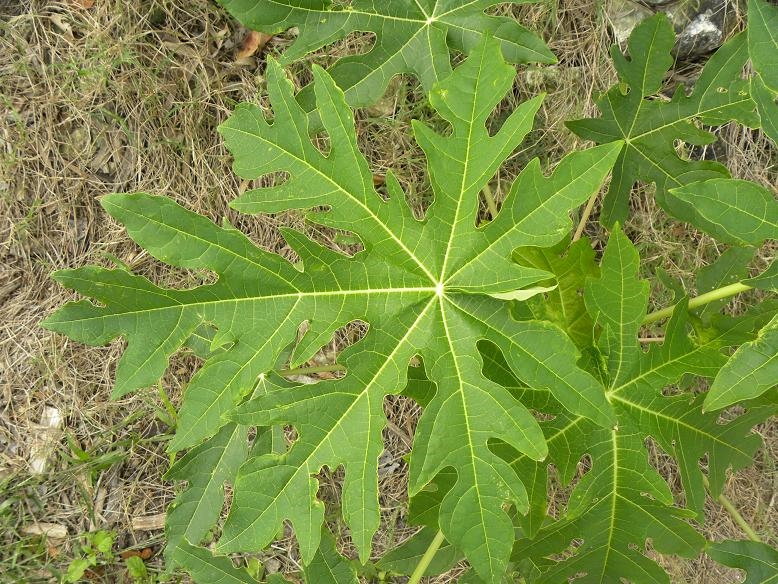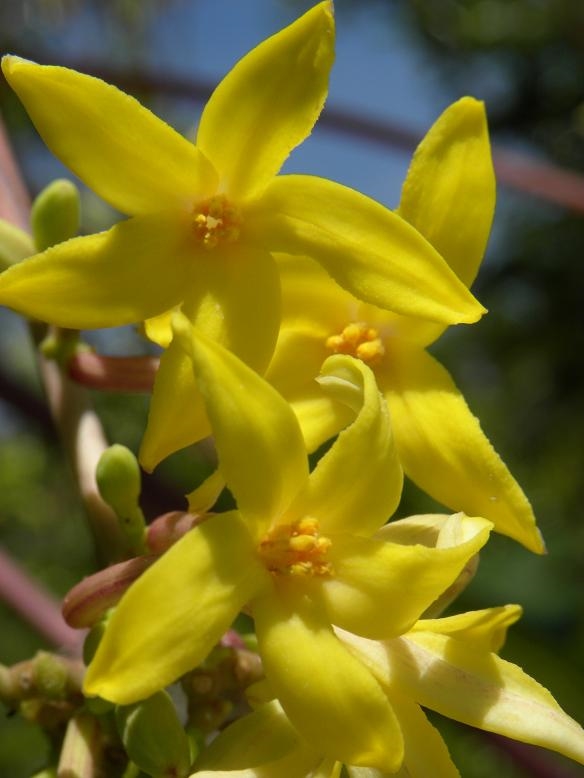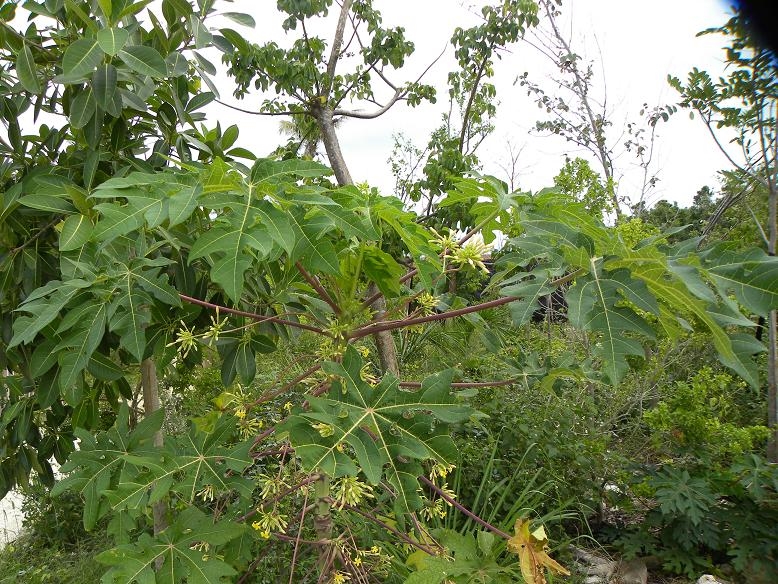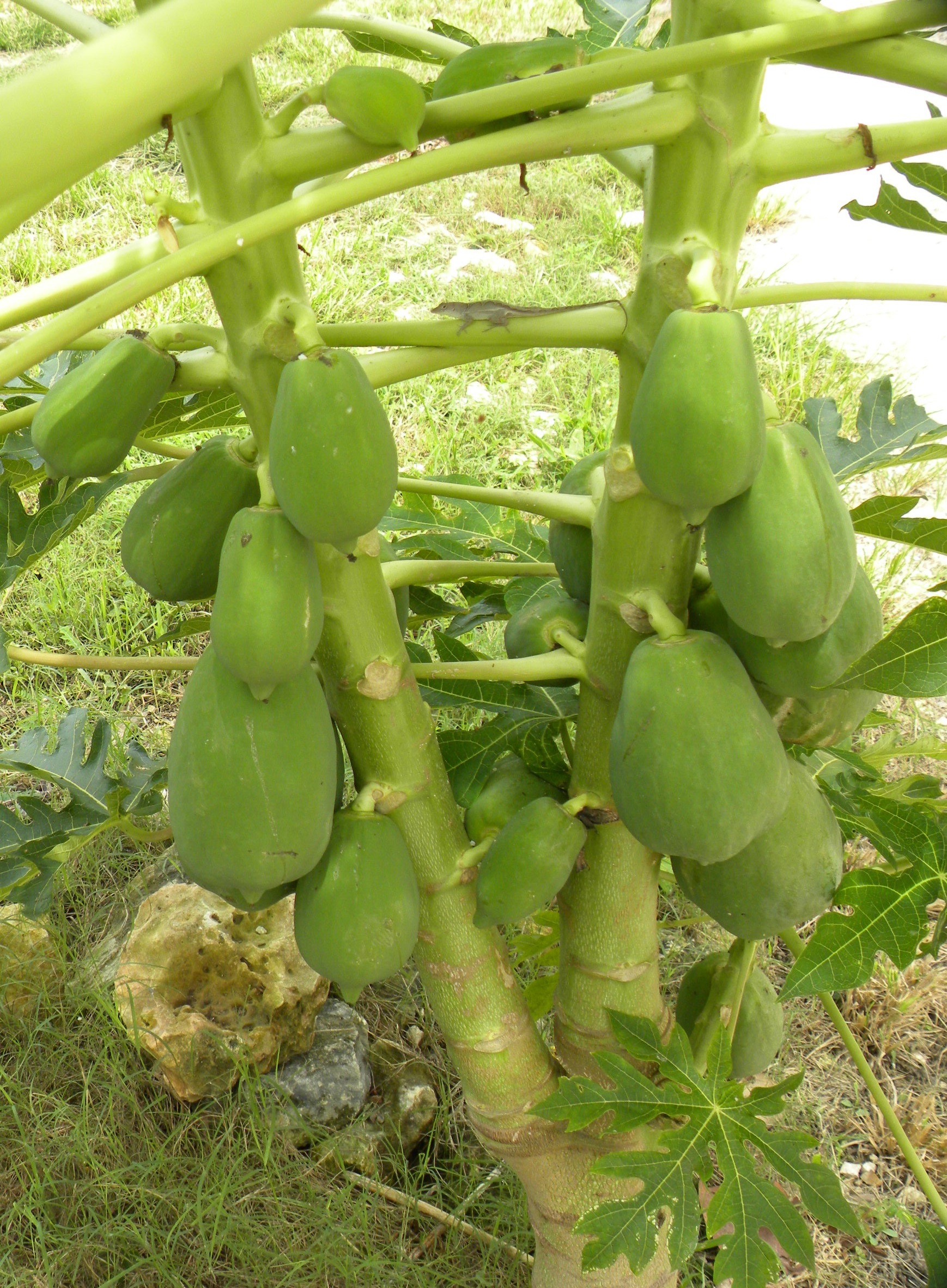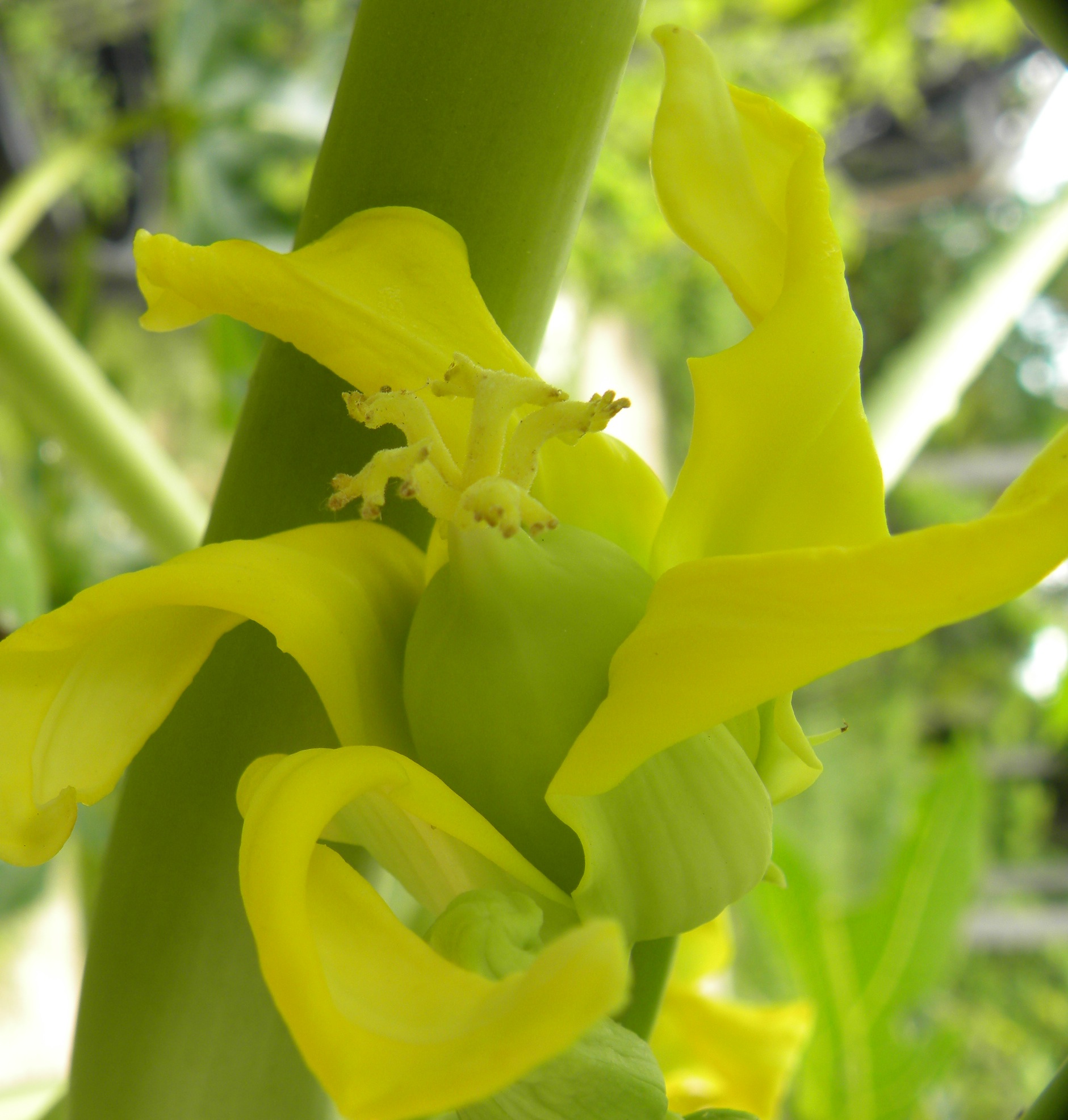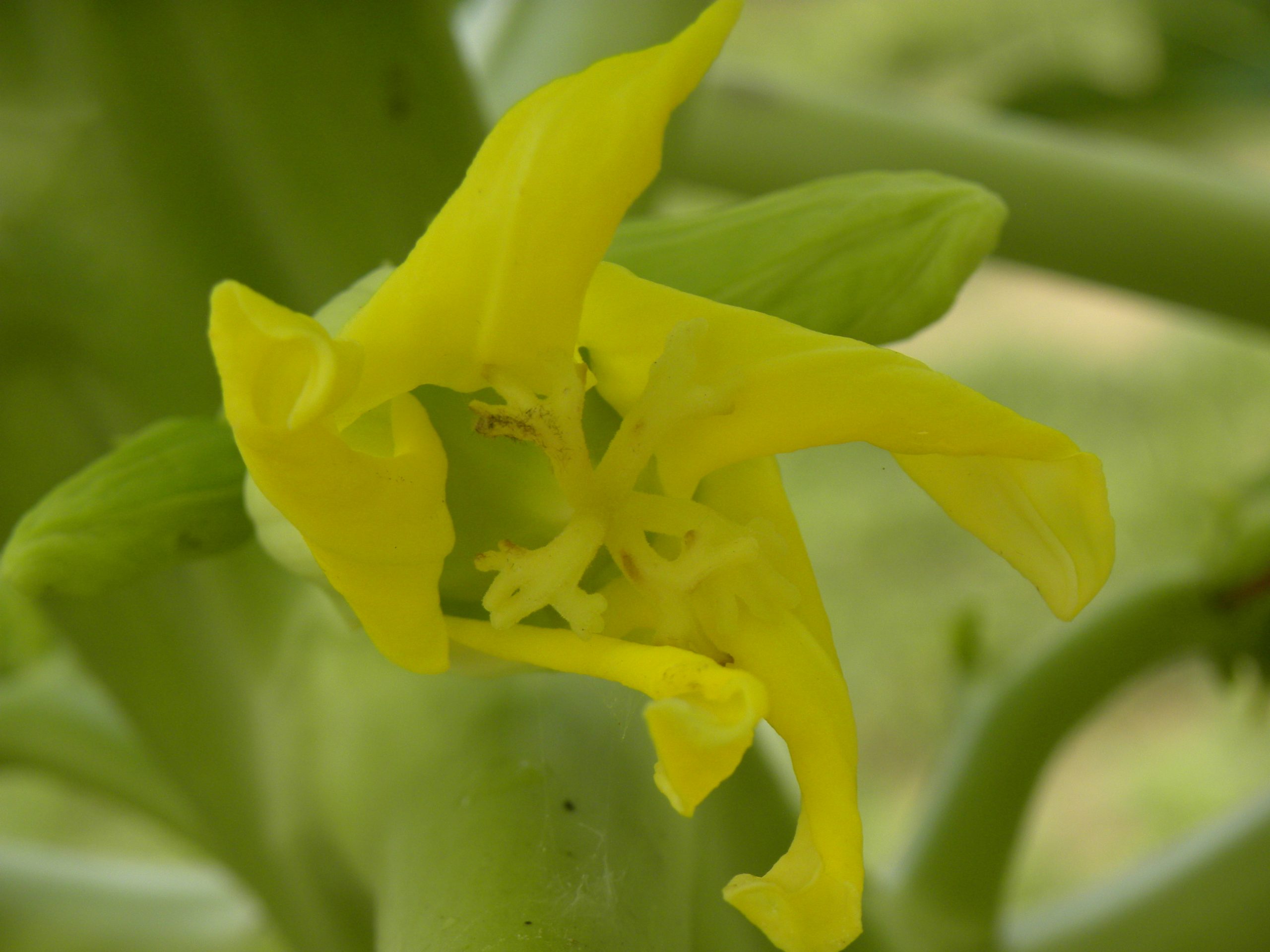Habit: Carica papaya grows as monopodial softwood tree with infrequent branching, to 10 m in height (usually smaller) and produces a slightly milky latex. The leaves are arranged alternately, to 1 m in length, deeply (compound) lobed to palmatifid, with an acute leaf apex.
Carica papaya is dioecious. The incomplete, imperfect, flowers are actinomorphic. The staminate flowers are arranged on racemes. The calyx has 5 unfused, green sepals. The corolla has 5 partially fused, greenish-yellow petals. There are 10 stamens; an outer ring of 5 stamens fused to the corolla and an inner ring of 5 unfused stamens. There is no carpel. Carpellate flowers arise from the trunk solitarily. The calyx has 5 unfused green sepals. The corolla has 5 greenish-yellow petals that are slightly fused at the base. There are no stamens. The carpel has a superior ovary with a single locule and numerous seeds. The fruit is an orang-red berry at maturity.
Habitat: Carica papaya grows as a cultivated species but is prone to escape along roadsides, other Human Altered environments, and the edges of natural areas.
Distribution: Carica papaya occurs on all islands groupings within the Lucayan Archipelago but is considered NOT native. It is native to the western hemisphere. It now also occurs in all tropical and subtropical regions of the world; both cultivated and as an escapee.
Medicinal/Cultural/Economic usage: Carica papaya has been used in the Lucayan Archipelago to treat hypertension, pain, and gastrointestinal issues (indigestion, ring worm, ulcers). In other parts of the Caribbean region it is also used to treat colds and coughs, kidney flushing, and dermatological problems (sores and jiggers).
The fruits are delicious to eat raw or cooked.
